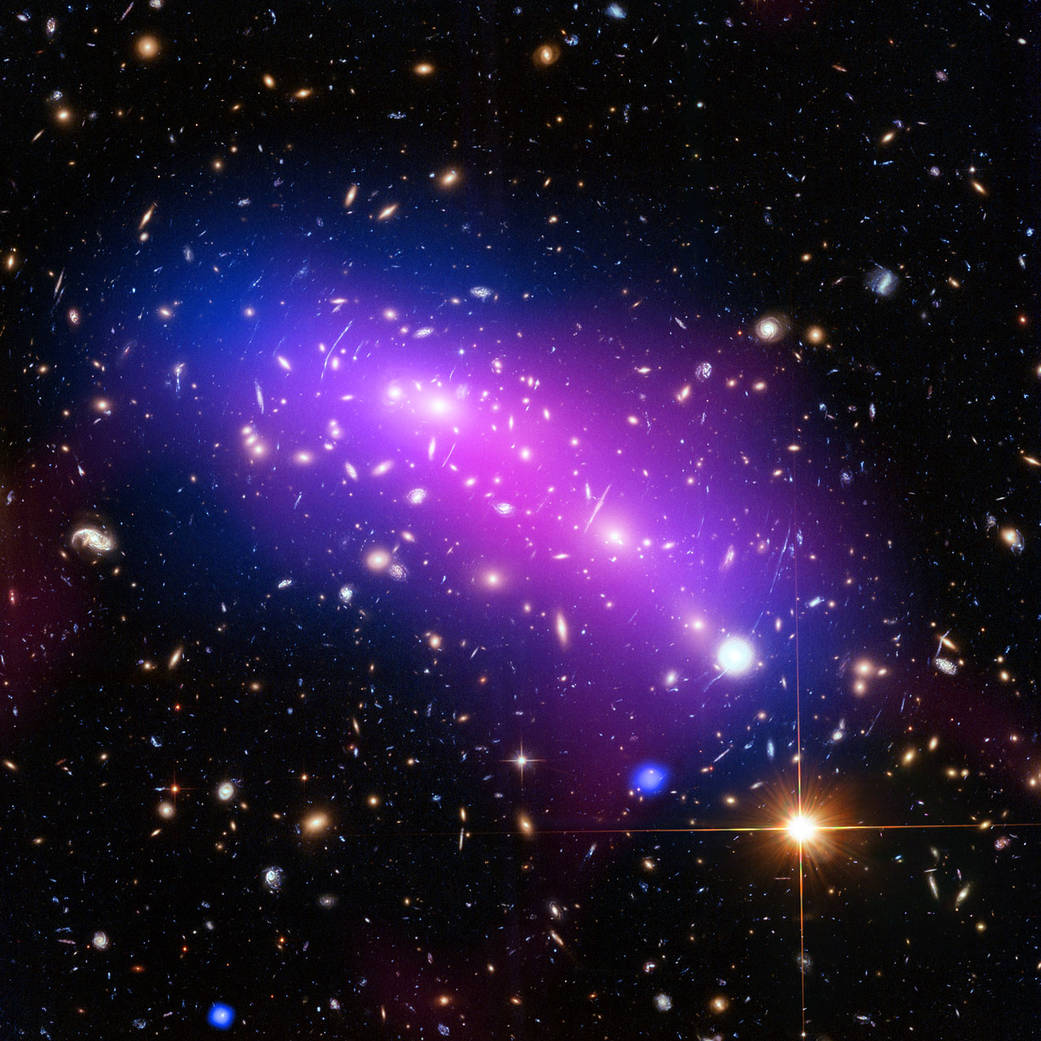At first glance, this cosmic kaleidoscope of purple, blue and pink offers a strikingly beautiful — and serene — snapshot of the cosmos. However, this multi-colored haze actually marks the site of two colliding galaxy clusters, forming a single object known asMACS J0416.1-2403 (or MACS J0416 for short).
MACS J0416 is located about 4.3 billion light-years from Earth, in the constellation of Eridanus. This image of the cluster combines data from three different telescopes: the NASA/ESA Hubble Space Telescope (showing the galaxies and stars), the NASA Chandra X-ray Observatory (diffuse emission in blue), and the NRAO Jansky Very Large Array (diffuse emission in pink). Each telescope shows a different element of the cluster, allowing astronomers to study MACS J0416 in detail.

(Image credit: NASA, ESA, CXC, NRAO/AUI/NSF, STScI, and G. Ogrean (Stanford University), Acknowledgment: NASA, ESA, and J. Lotz (STScI), and the HFF team)
Filed Under: Aerospace + defense




